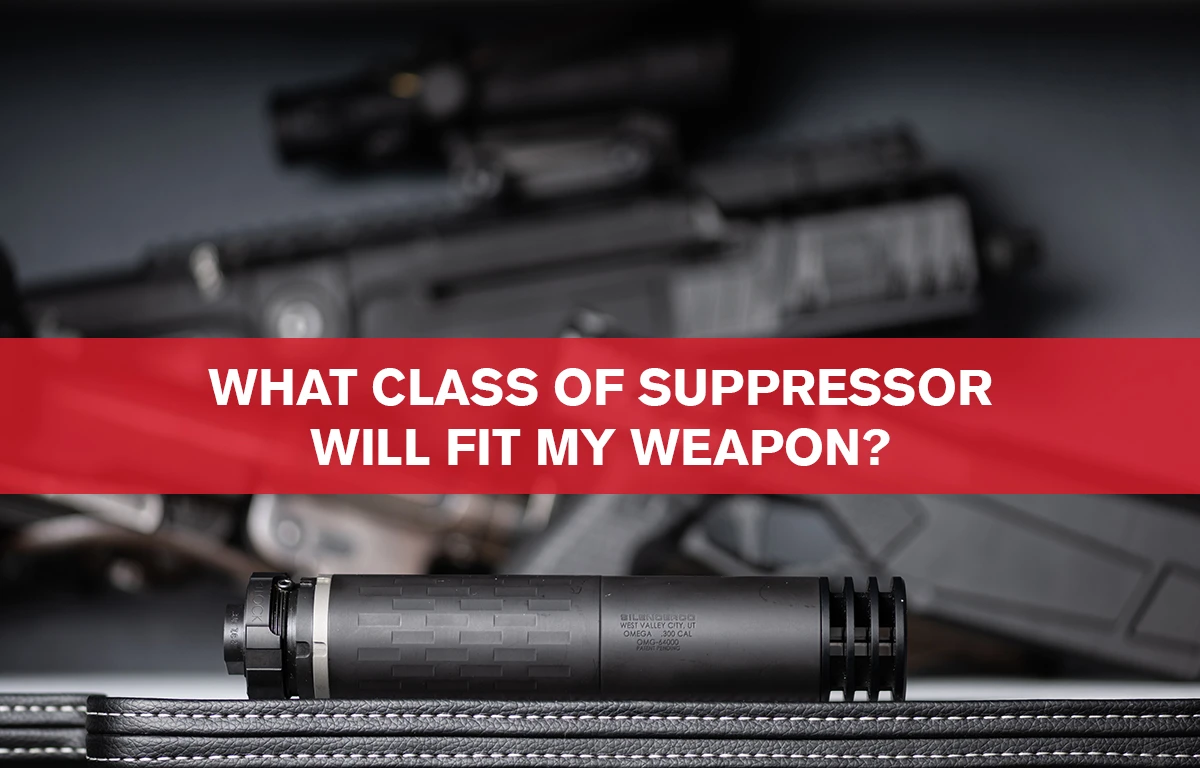

One question that we get asked often is, “how do I know what class of suppressor will fit my host firearm?” This is a very important question to ask when looking at buying a suppressor! We have 6 distinct categories that we list, but sometimes it can be hard to determine where to start. In this article, we’ll be giving you a look into what each of our 6 suppressor groups mean. We’ll also be discussing the 3 key factors that will help you in looking for your perfect suppressor.
First of all, we categorize suppressors into 6 different groups that we’ll be going into further detail on:
Before we get started on each category, let’s discuss the 3 main factors you should keep in mind that will help you determine which silencer category you probably want to look at:
- The bore size of your firearm. It may seem like a no-brainer, but it’s incredibly important to note. Knowing your firearm’s bore size will help you determine what bore size your suppressor needs to be. You’ll want to make sure that the bullet you are sending down range is smaller than the bore of the suppressor.
- The pressure of the round. Suppressors are designed with a particular volume and strength in mind. There are certain cases where the bullet you’re firing will fit through the suppressor, but the suppressor is not designed to handle the pressure of that particular round. Each suppressor that is designed and manufactured has a specific caliber rating for this reason. If you’re ever wondering about a specific cartridge that may not be listed, contact us and we’ll be happy to help.
- The size and weight of the suppressor. Yes! This is definitely a factor to consider. We see a lot of folks looking to suppress the most amount of firearms with one suppressor, and that’s great! But there are cases where the bore size of the suppressor is large enough, and it will easily handle the pressure of your round - but the suppressor is just too large and heavy for the firearm. For example, a large bore suppressor on a 5.7x28 FN would probably be larger and heavier than the weapon itself.
Now that we’ve covered the three rules to consider, we can now focus on what works and what doesn’t work with each suppressor category listed.
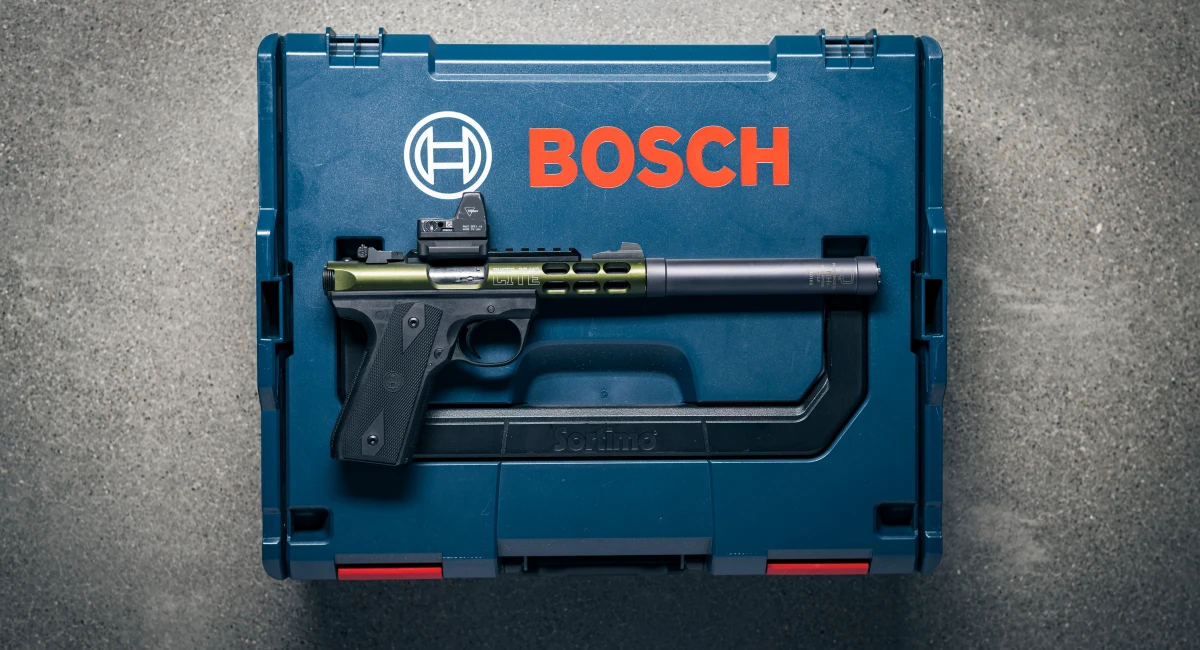

Rimfire Suppressors
Rimfire suppressors will handle .22 lr just fine. Where rimfire suppressors get a little more particular is when it comes to .22 Mag, .17 HMR, and 5.7x28 FN. Also, it’s important to note that even though the bore size and thread pitch are the same, NONE OF THESE rimfire silencers will work with a 5.56mm rifle because of the higher pressure!
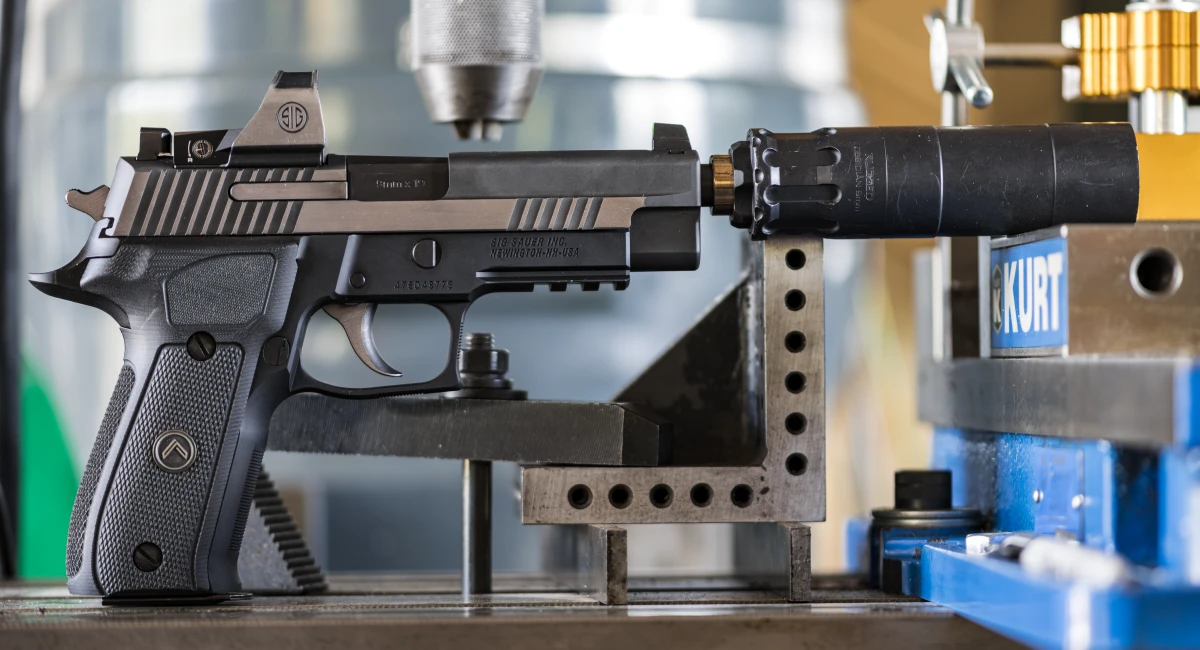

Pistol Caliber Suppressors
Our pistol suppressor category is where we keep all of the 9mm, .40, and .45 caliber suppressors. If you’re looking to get a suppressor for your handgun, pistol caliber carbine, or both, this is the category you’ll want to be looking at.
Some customers prefer .45 to cover the gamut in terms of suppressing their pistols, but others prefer one designated suppressor per firearm. .45 suppressors tend to be a tad heavier and larger. So, if you don’t own a .45 pistol, we tend to recommend sizing down to your 9mm compadre to save a pinch of weight. We should note that suppressing a 9mm firearm with a 45 caliber suppressor isn’t quite as effective due to the bore aperture compared to the round being shot through it, but we talk about that in another blog post already.
Pistol Suppressors and 22 LR Firearms: Many pistol caliber suppressors will also work great with .22 LR firearms, but be forewarned that your suppressor should be user-serviceable before shooting this dirty ammo through it, because it will have to be cleaned afterward.
Pistol Suppressors and Rifle Hosts: The general rule of thumb is to consult your user manual (can we say that enough?). One thing to remember with a pistol caliber suppressor is that you should NOT shoot rifle rounds through them unless the suppressor is specifically rated for your caliber. A 9mm suppressor, for example, will often thread onto a 5.56 rifle, but the pressure from the cartridge might be too much for the suppressor. Some pistol suppressors might be rated for subsonic rifle rounds, like 300 blackout, for example. This is where it’s very important to check your suppressor’s user manual, or reach out to your suppressor’s manufacturer if you have any questions.


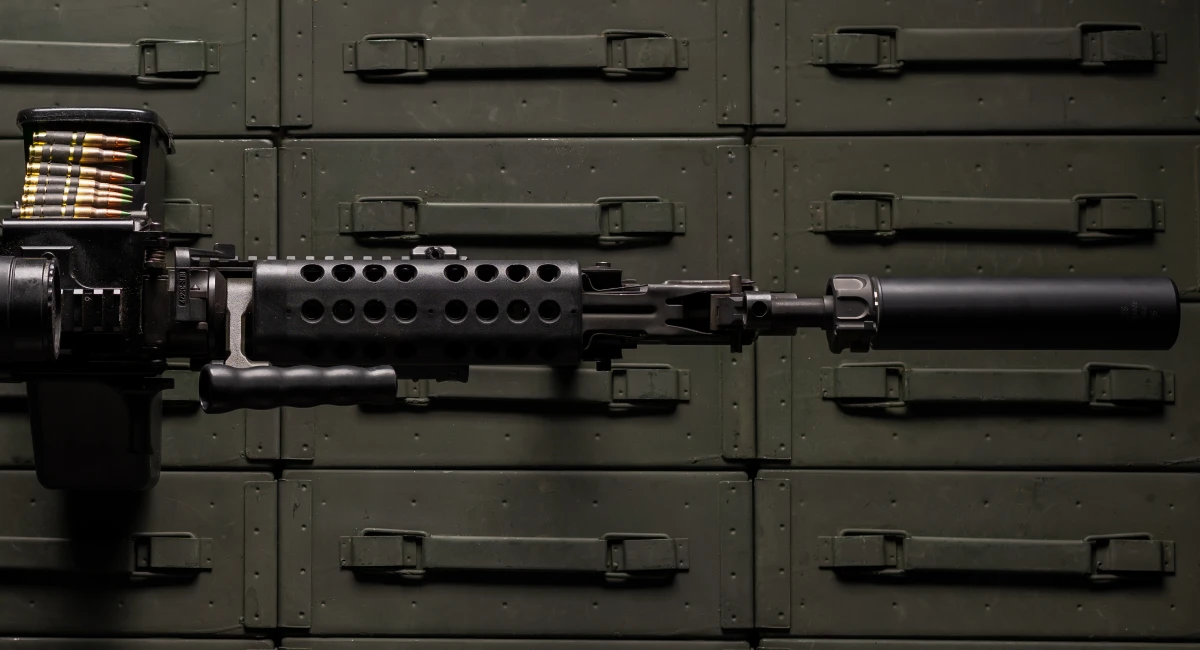

5.56 Rifle Suppressors
5.56mm rifle suppressors are designed to handle significantly more pressure than either pistol or rimfire suppressors. If you’re looking to suppress your AR 15 chambered in .223, or 5.56mm, for example, this is where you’ll want to start looking.
5.56mm Rifle Suppressors and 22 LR Firearms: Many people ask if they can shoot their .22 LR firearms using these rifle suppressors. The answer is that we would NOT recommend it, but it could work. There are some problems with this combination, however:
- Most .22 LR ammunition is not jacketed and will result in lead residue building up inside the suppressor. The .22 ammo also tends to be very dirty since it's so inexpensive. Because of these issues, the rimfire suppressors come apart for cleaning - but a lot of 5.56mm rifle suppressors do not. If you shoot a lot of .22 LR through your 5.56mm suppressor, it can be very hard to clean that lead residue out; so, we typically recommend using a dedicated .22LR suppressor for those host firearms.
- 5.56mm rifle suppressors are much heavier than their rimfire cousins. Where a rimfire suppressor could weigh mere ounces, some 5.56 suppressors can easily weigh over one pound! Typically, when shooting rimfire, you want to keep your set up light, and a 5.56mm rifle suppressor could greatly offset the natural balance.
5.56mm Rifle Suppressors and Pistols: Technically, if you have the proper components (booster assembly, if applicable), this could be a potential match, and work just fine. Suppressing a handgun or a PCC with a rifle suppressor won’t be as effective as a dedicated suppressor, but it is possible. It does come at the cost of weight and length, usually, so keep that in mind when searching for a suppressor. If you’re looking to use a 5.56mm rifle suppressor on a handgun, you’ll also need to ensure that the suppressor is compatible with a booster assembly too.
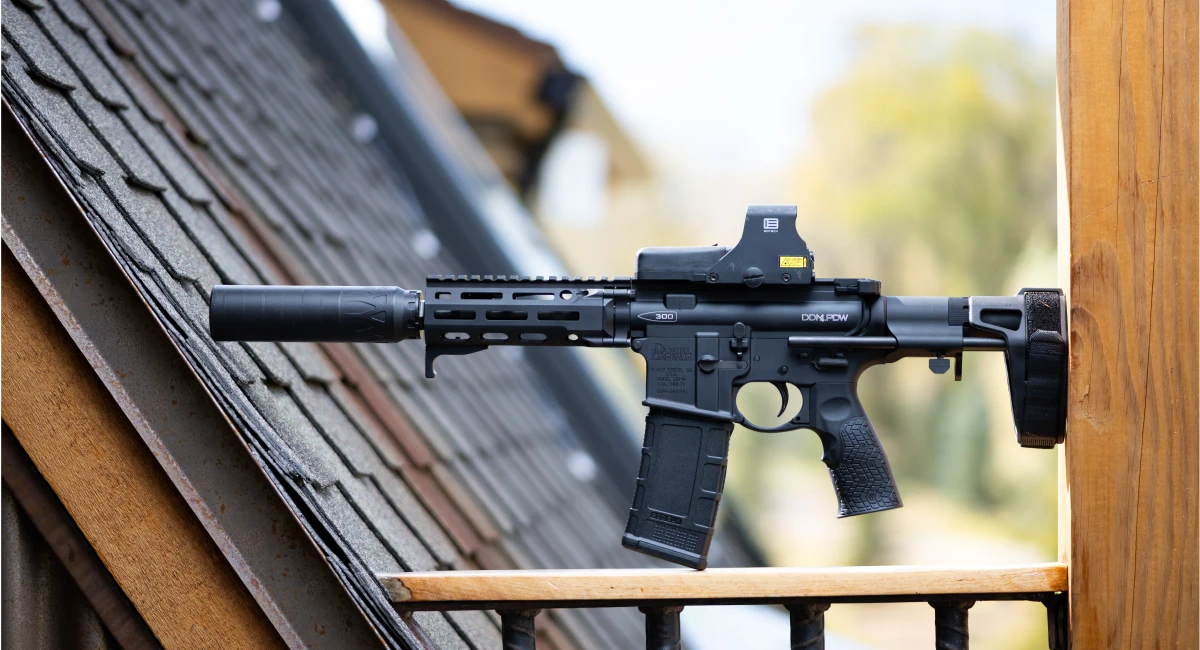

7.62 Rifle Suppressors
These 7.62mm rifle suppressors are a step up from 5.56mm suppressors in terms of what they can handle. In this category, a lot of the suppressors can handle most modern bullets that are either .30 caliber or smaller. To name just a few, this category can usually handle the likes of .308, 6.5mm, 6.8mm, 7mm, .300 Win Mag, .300 Blackout, or any other 7.62mm variant. The allure of using a 7.62mm suppressor on all of your firearms is great, but it does come at a cost, literally and figuratively.
Also, because of their extreme flexibility, this is a category where you need to be very careful of chamber pressures. The .300 WM, for example, will fit through any of the suppressors - but they are not all designed to handle that kind of pressure. As a general rule, you can put anything up to .308 through these 7.62mm suppressors without an issue. Once you go above the .308 - be sure to verify with your manufacturer’s user manual that the suppressor you're looking at will handle the additional pressure levels.
7.62mm Rifle Suppressors and .22 LR Firearms and Pistols: We covered this in the 5.56 Rifle Suppressor section, but we’ll just say that we do not recommend using a 7.62mm suppressor on a rimfire or a pistol. It’s just so much unnecessary added weight, and it’s not as effective as a silencer with a smaller bore aperture.
7.62mm Rifle Suppressors and 5.56mm Rifles: This 7.62 suppressor category can also work with 5.56mm rifles. BUT there’s a caveat. We still stand by the same recommendation we make for .45 suppressors on a 9mm. If you have a 7.62mm rifle you’re looking to suppress, by all means, this is the category you’ll want to be looking in! But if you don’t own a 7.62 rifle, and don’t intend to, we always recommend sticking with the bore size that’s closest to what you’ll be shooting.
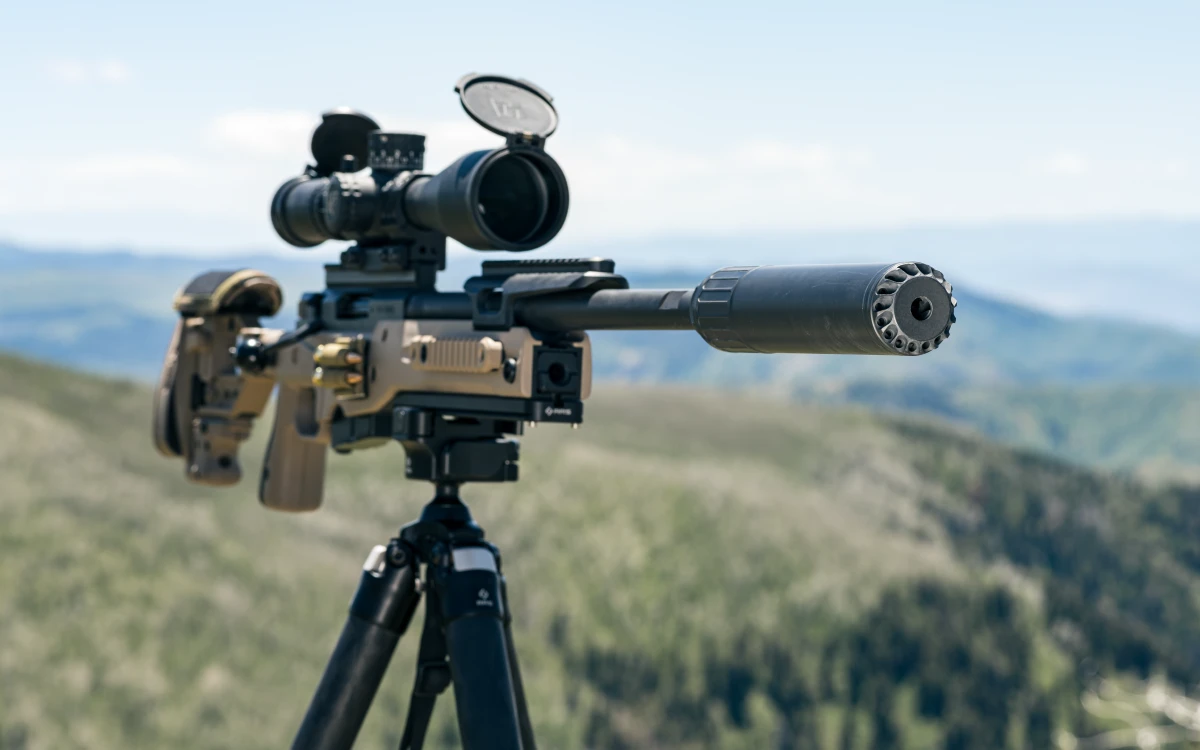

Large Bore Suppressors
Large bore suppressors include both .338 Lapua and .50 BMG suppressors. They are big. They are heavy. And they are designed to handle extreme pressures. In many cases, the .338 models can also be used for high-pressure .30 caliber bullets - like the .300 Ultra Mag. This large bore category is generally for people looking to suppress a specific large bore firearm. The threading on these generally don’t accommodate much smaller cartridges, so we don’t recommend trying to use it on another firearm besides what your intended purpose was.
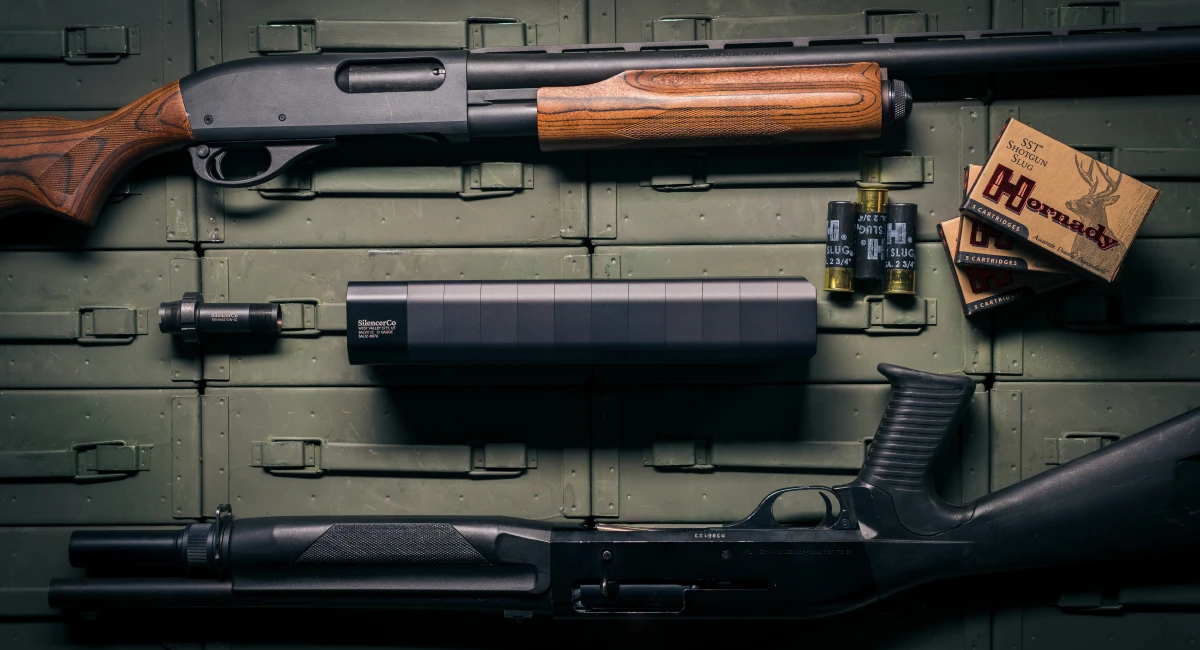

Specialty Suppressors
This specialty suppressor category is for those unique silencers that might not necessarily fit into the other categories mentioned. An example of this would be looking for a 12 gauge shotgun suppressor. This is also where we list our integrally suppressed barrels. If you end up in this section, you're most likely looking to suppress one designated firearm that might be a little more niche than the other categories we've mentioned.
Conclusion
It’s a lot to take in, we know! But we’re here to help guide you if you need any assistance. As you can see, there are often several possibilities when choosing which category you should be looking at, but there is usually one that fits the bill better than any other. Now that you've figured out what category you should start looking in, it's time to pick out your perfect suppressor.





